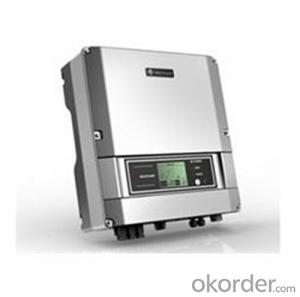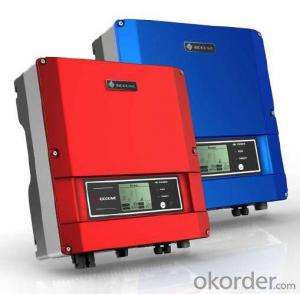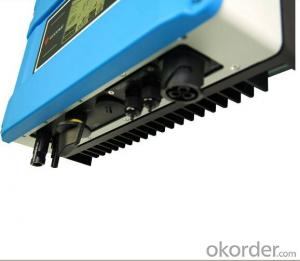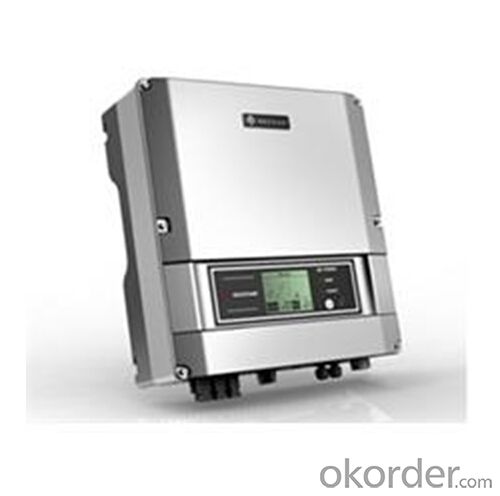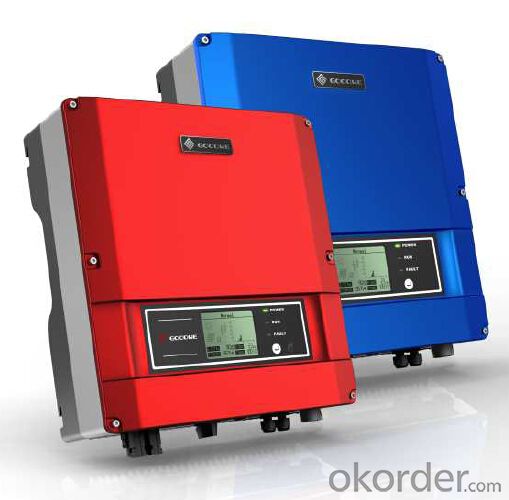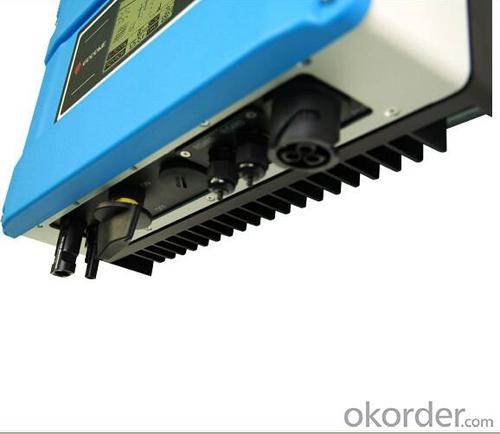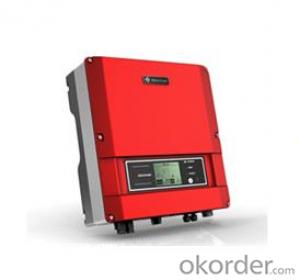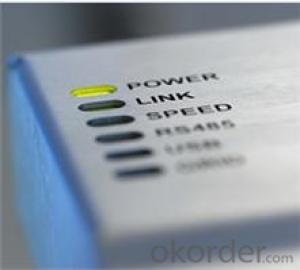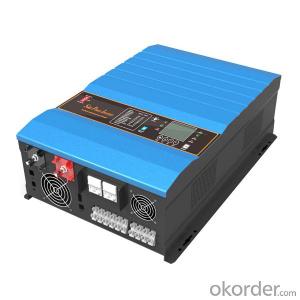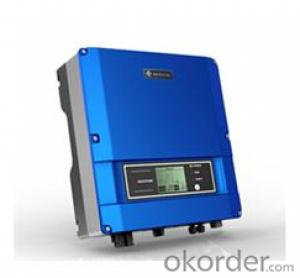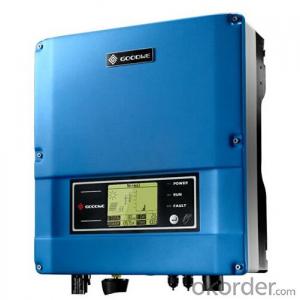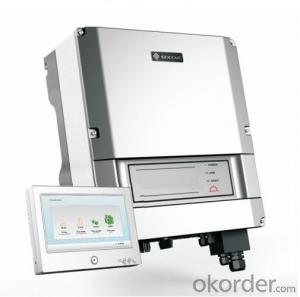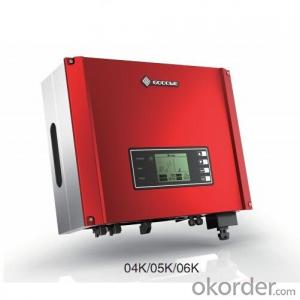House Solar Inverter GW3000-SS On Grid Solar Inverter
OKorder Service Pledge
OKorder Financial Service
You Might Also Like
GW3000-SS photovoltaic inverter is suitable for home rooftop photovoltaic system, designed under modern industrial concept. There are three colors for option with fashionable appearance. This model uses isolation-free design with advanced communication method and extremely high conversion efficiency. The maximum output power is 3000W. To ensure its stability and long service life, our inverter is manufactured with optimum quality components. It holds a safe lead among similar products.
Datasheet
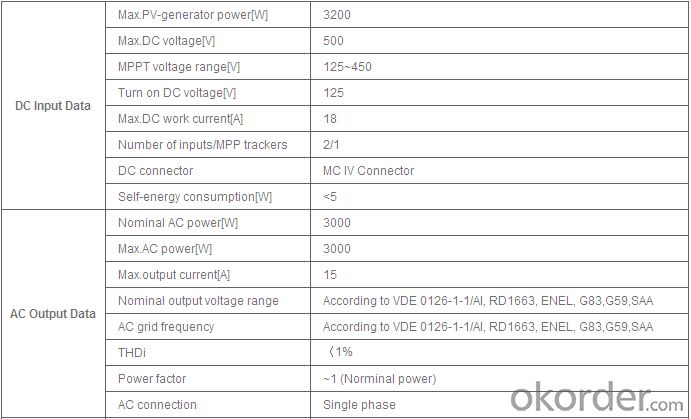
- Q: How does a solar inverter handle variations in battery charge levels?
- A solar inverter manages variations in battery charge levels by continuously monitoring the battery voltage and adjusting the charging and discharging rates accordingly. It optimizes the power flow and ensures that the battery is neither overcharged nor depleted, thus maximizing its lifespan and efficiency.
- Q: How do you choose the right size of solar inverter for a solar power system?
- To choose the right size of solar inverter for a solar power system, you need to consider two main factors: the total power output of your solar panels and the maximum power consumption of your household or facility. First, calculate the total wattage of your solar panels by summing up the individual panel ratings. Then, assess your power consumption by considering the peak load requirements or the average daily consumption. Match the inverter's capacity to the higher value among these two factors to ensure efficient energy conversion. It is also recommended to consult with a professional solar installer to ensure the correct sizing of the inverter based on your specific needs.
- Q: What is the role of a bypass switch in a solar inverter?
- The role of a bypass switch in a solar inverter is to provide an alternate path for the solar energy to flow in case of a fault or failure in the inverter. It allows the solar power to bypass the inverter and directly feed into the grid or another designated load, ensuring continuous power supply and preventing any disruptions in the system.
- Q: What are the advantages of using a three-phase solar inverter?
- There are several advantages to using a three-phase solar inverter. Firstly, three-phase solar inverters allow for higher power output compared to single-phase inverters. This is because they distribute the power across three phases, resulting in increased efficiency and capacity. Additionally, three-phase inverters provide better voltage stability and balance across the three phases of a power grid. This is particularly beneficial in commercial or industrial settings where there may be heavy loads and varying power demands. Furthermore, three-phase solar inverters offer improved reliability and durability. They are designed to handle higher currents and can withstand higher temperatures, ensuring a longer lifespan and reducing maintenance requirements. Lastly, three-phase inverters are more cost-effective in large-scale solar installations. They allow for better utilization of available grid infrastructure, reducing transmission losses and optimizing power distribution. Overall, the advantages of using a three-phase solar inverter include higher power output, improved voltage stability, enhanced reliability, and cost-effectiveness in larger-scale installations.
- Q: What is the role of a power factor correction circuit in a solar inverter?
- The role of a power factor correction circuit in a solar inverter is to improve the power factor of the inverter, ensuring that the power drawn from the grid is used efficiently. By reducing the reactive power and bringing it closer to the real power, the power factor correction circuit helps minimize energy losses and optimize the overall performance of the solar inverter.
- Q: What is the maximum AC output power of a solar inverter?
- The maximum AC output power of a solar inverter is determined by its capacity and specifications, but it typically ranges from a few hundred watts to several kilowatts.
- Q: What is the role of a solar inverter in voltage and frequency regulation during grid disturbances?
- The role of a solar inverter in voltage and frequency regulation during grid disturbances is crucial to maintaining the stability and reliability of the electrical grid. During grid disturbances, such as voltage fluctuations or frequency deviations, the solar inverter acts as a control device that helps regulate and stabilize the electrical parameters. In terms of voltage regulation, the solar inverter continuously monitors the voltage level of the grid and adjusts its output accordingly. If there is an increase in grid voltage, the inverter will reduce its output to prevent overvoltage conditions. Conversely, if there is a decrease in grid voltage, the inverter will increase its output to compensate and maintain a stable voltage level. This regulation ensures that the voltage supplied by the solar inverter aligns with the grid's voltage requirements, preventing damage to electrical equipment and ensuring the safe operation of the grid. Similarly, the solar inverter also plays a role in frequency regulation during grid disturbances. The inverter constantly monitors the frequency of the grid and adjusts its output frequency to match the grid's frequency. If the grid frequency deviates from the standard frequency, the inverter will modify its output frequency to bring it back to the desired level. This frequency regulation is essential for maintaining the synchronization of various electrical devices connected to the grid, preventing equipment damage, and ensuring the stability of the grid. Overall, the solar inverter's role in voltage and frequency regulation during grid disturbances is to provide stability and reliability to the electrical grid. It acts as a control device that continuously monitors and adjusts its output to maintain the desired voltage and frequency levels, thus preventing potential damage to electrical equipment and ensuring the smooth operation of the grid.
- Q: What are the typical efficiency ranges for different types of solar inverters?
- The typical efficiency ranges for different types of solar inverters vary depending on the specific technology and design. However, in general, string inverters have an efficiency range of around 95% to 98%, while microinverters tend to have an efficiency range of about 96% to 99%. On the other hand, central inverters have a wider efficiency range, typically ranging from 95% to 99%. It's important to note that these efficiency ranges can also be influenced by factors such as temperature, load, and design variations among manufacturers.
- Q: Can a solar inverter be used in a stand-alone solar system?
- Yes, a solar inverter can be used in a stand-alone solar system. In fact, it is an essential component as it converts the direct current (DC) generated by the solar panels into usable alternating current (AC) for powering appliances and electronics. This allows the stand-alone solar system to meet the energy needs of off-grid locations or areas with limited access to the main power grid.
- Q: Generally a large grid-connected photovoltaic power plant will have several inverters
- Group is the use of a number of grid-connected inverter and grid-connected AC power grid, the advantage is the loss of small, low cost of the cable (because the PV cable is more expensive), eliminating the cost of the convergence box, and multiple
Send your message to us
House Solar Inverter GW3000-SS On Grid Solar Inverter
OKorder Service Pledge
OKorder Financial Service
Similar products
Hot products
Hot Searches
Related keywords
